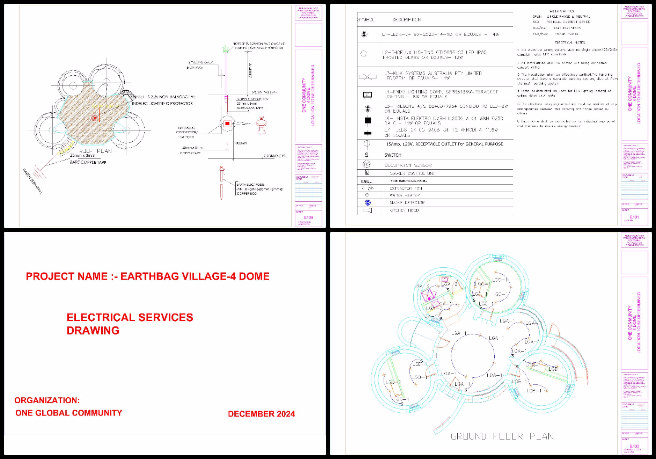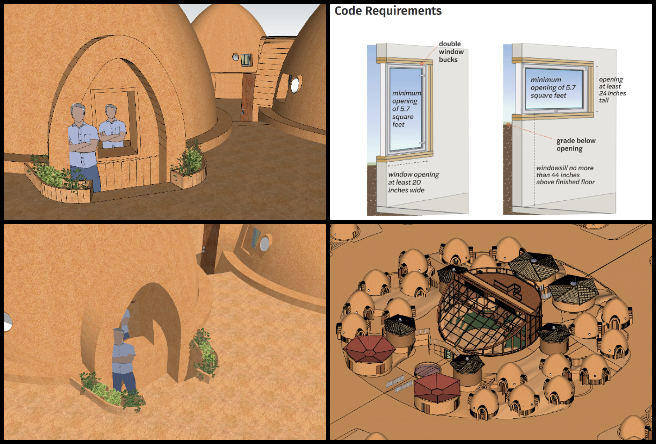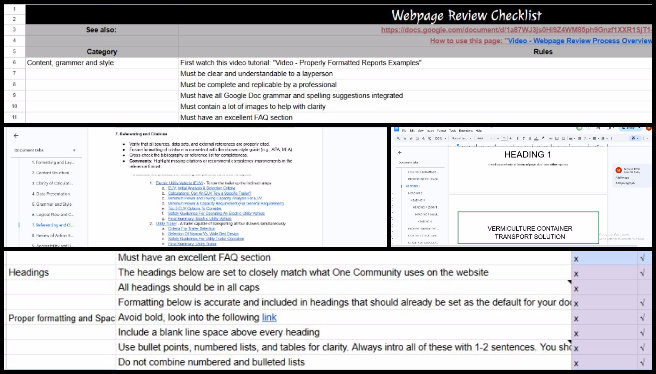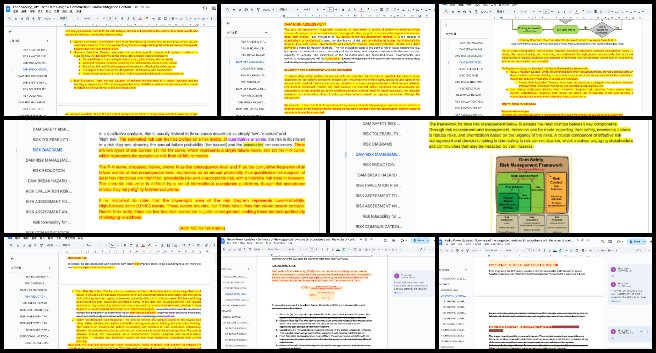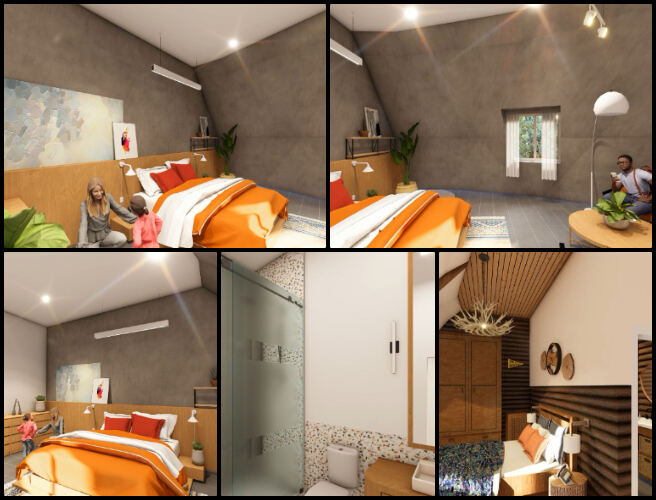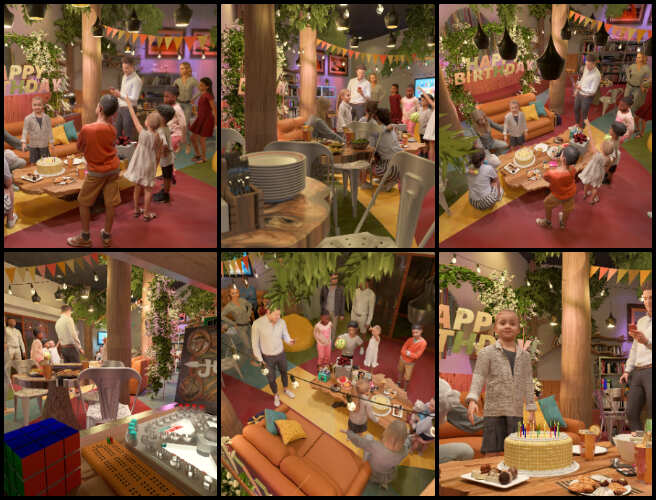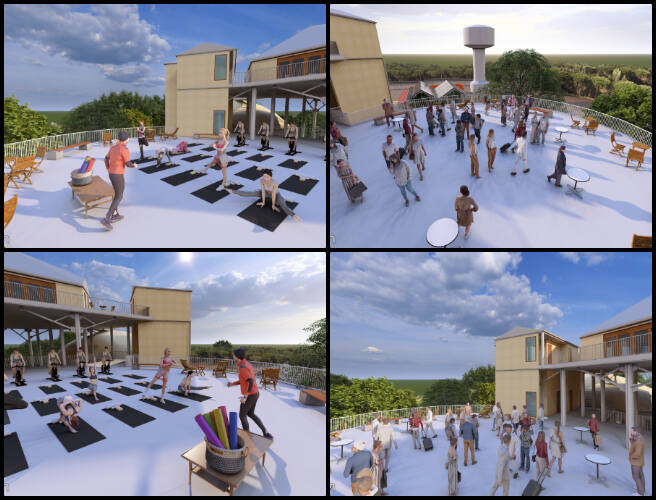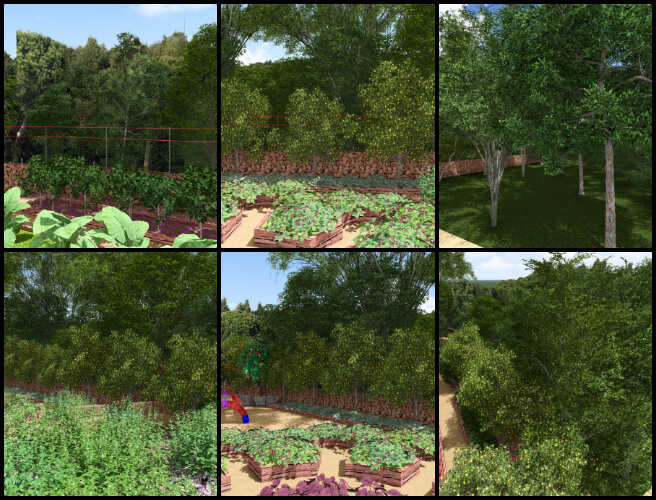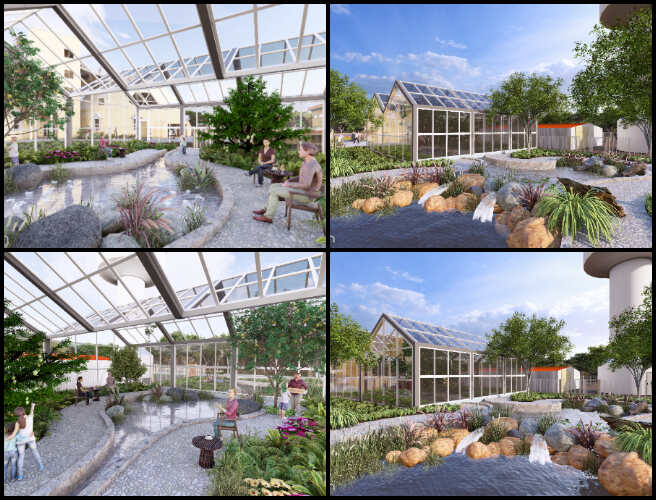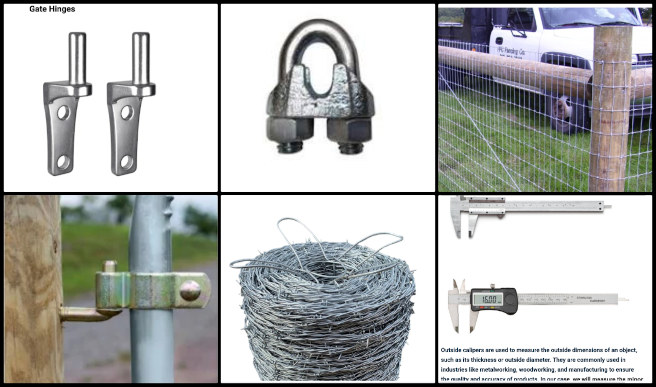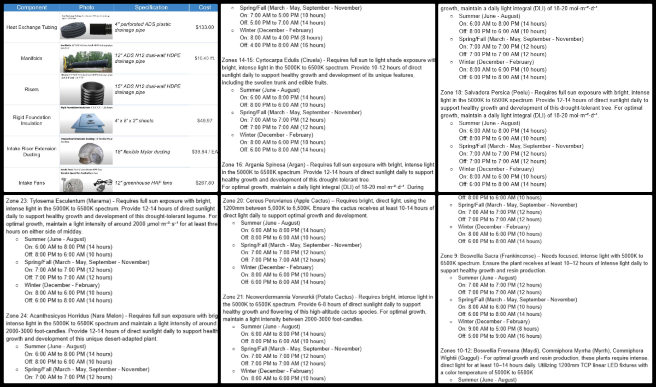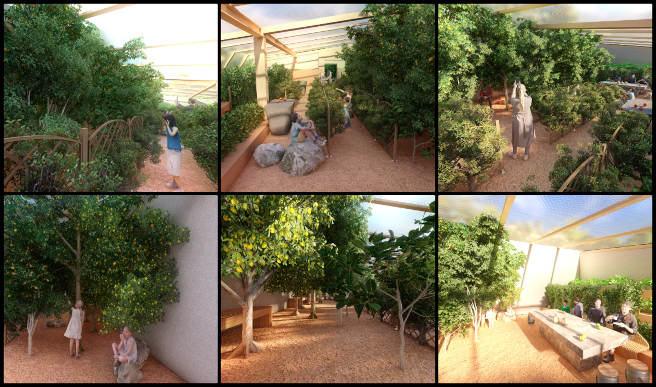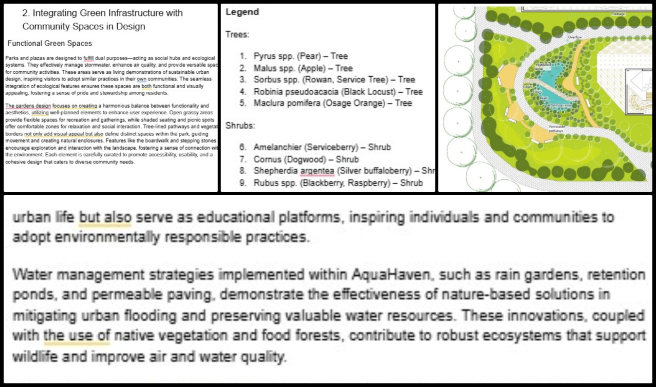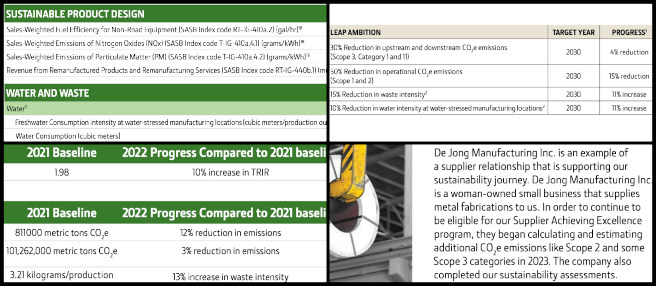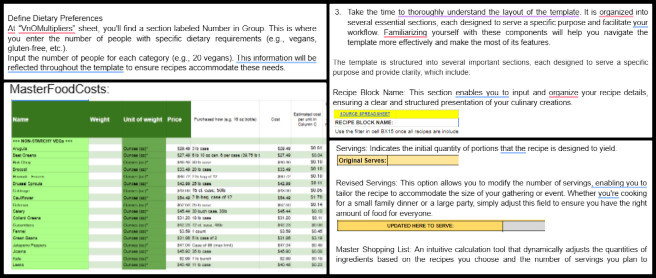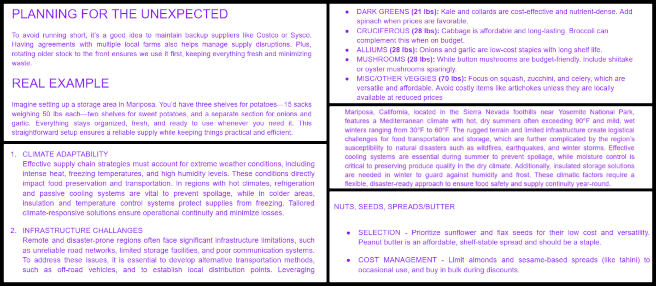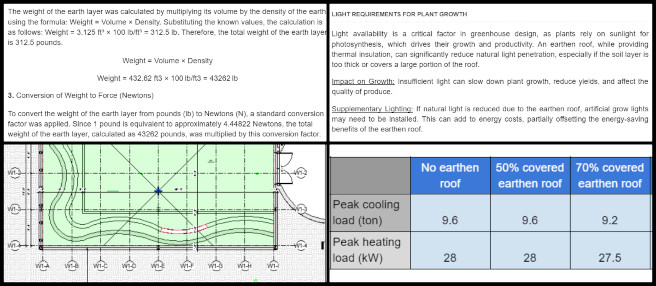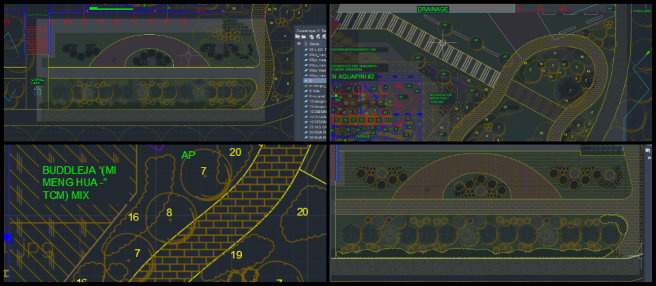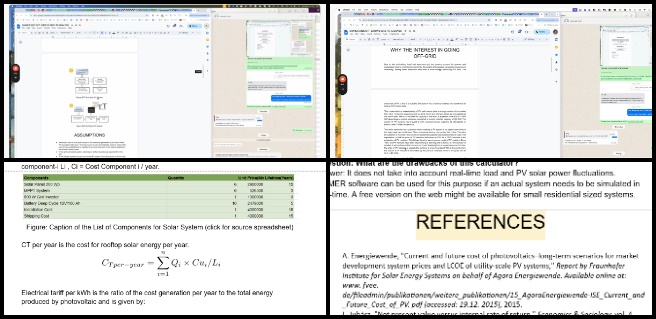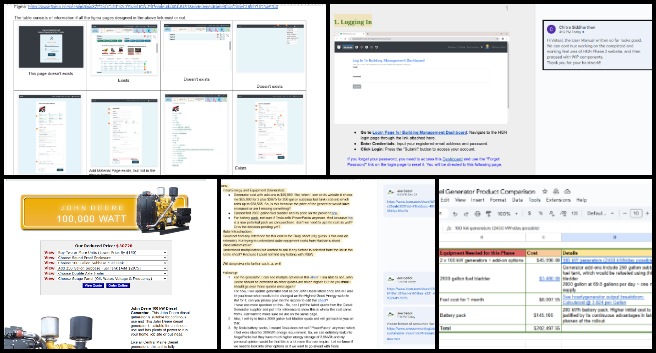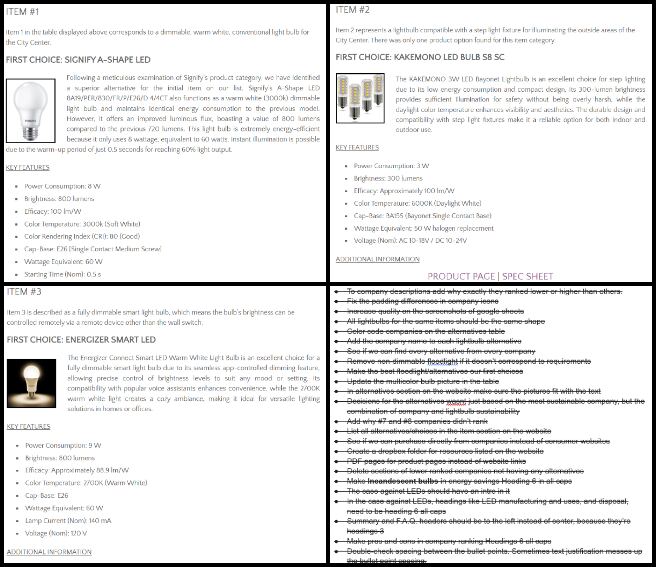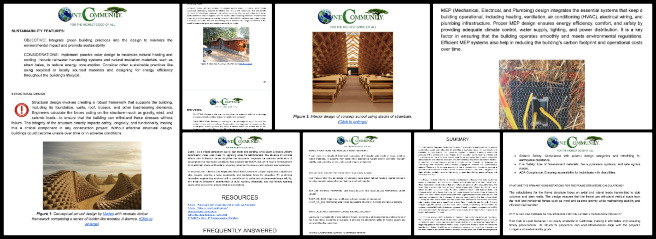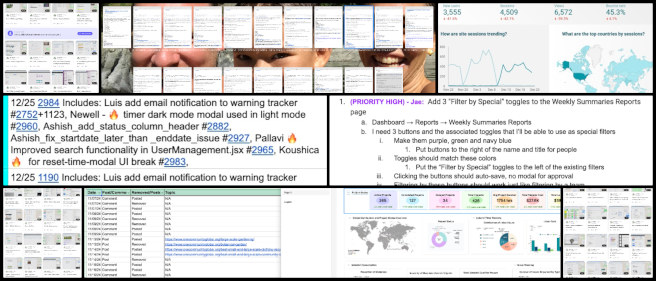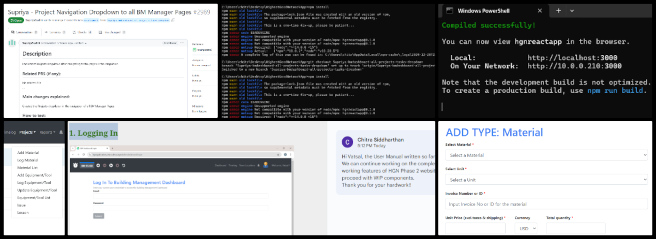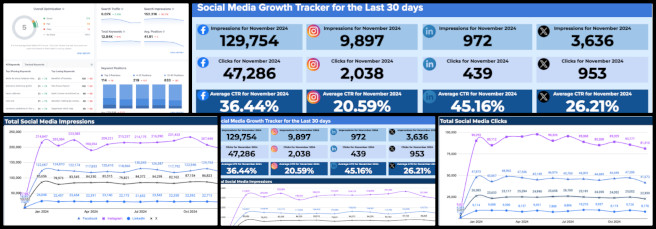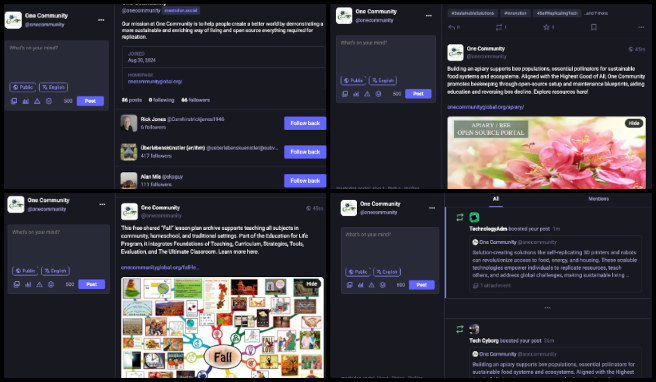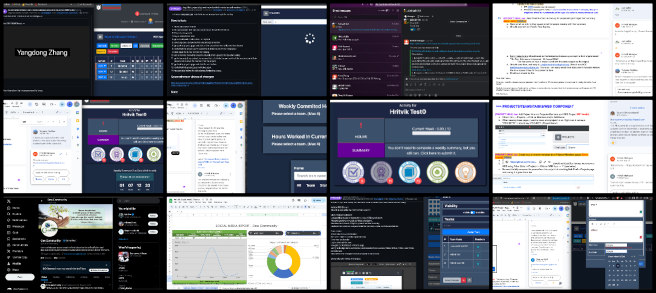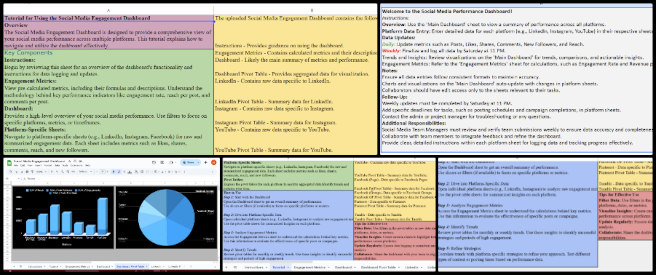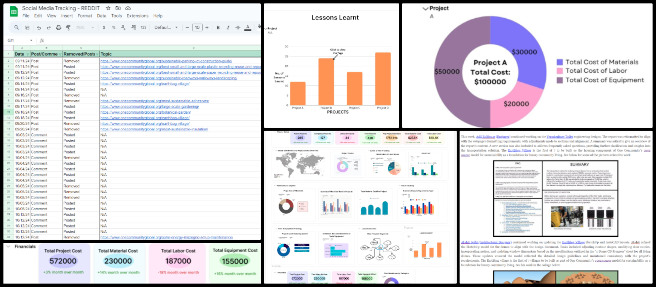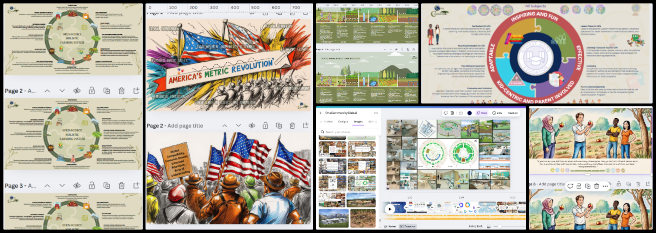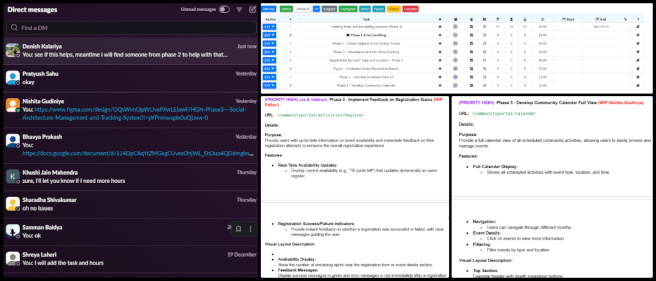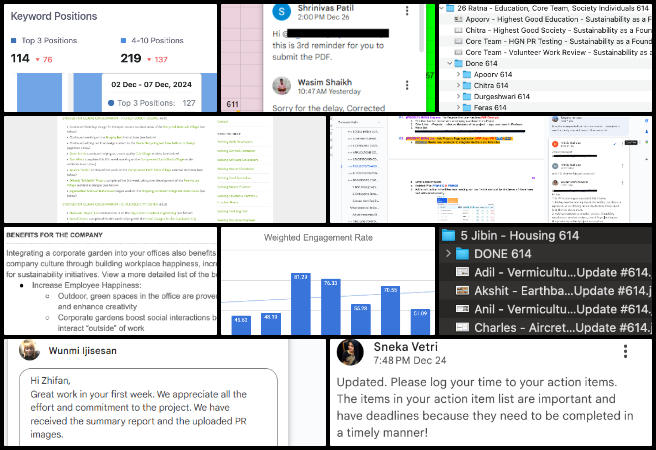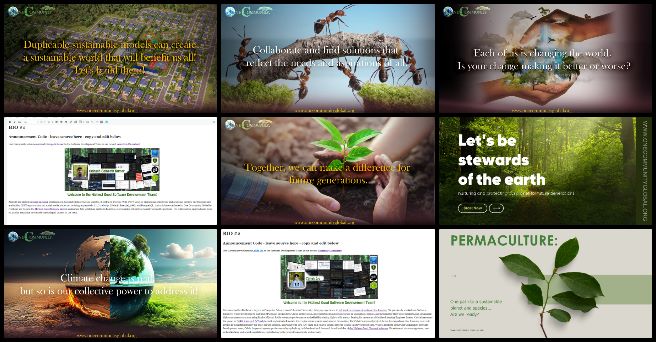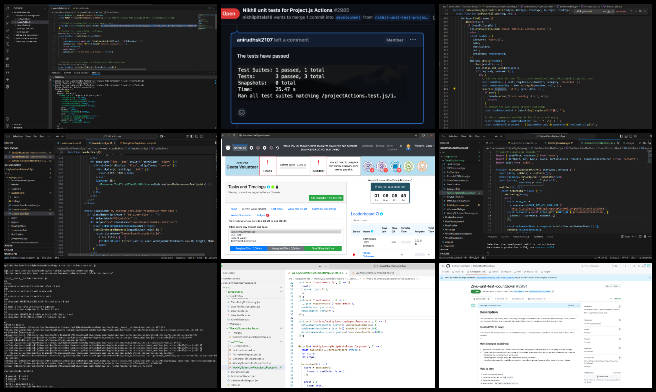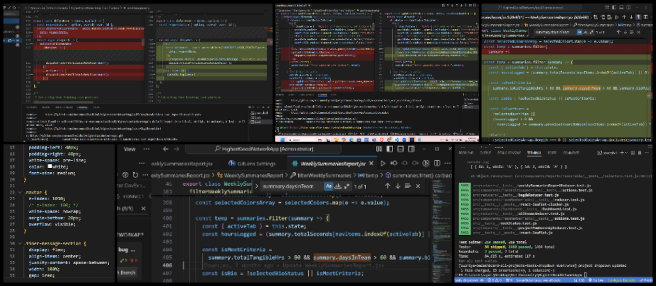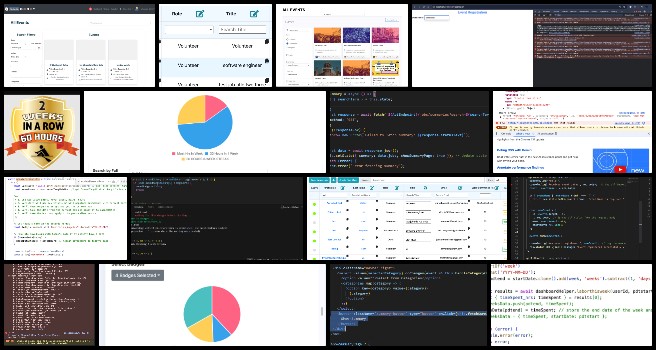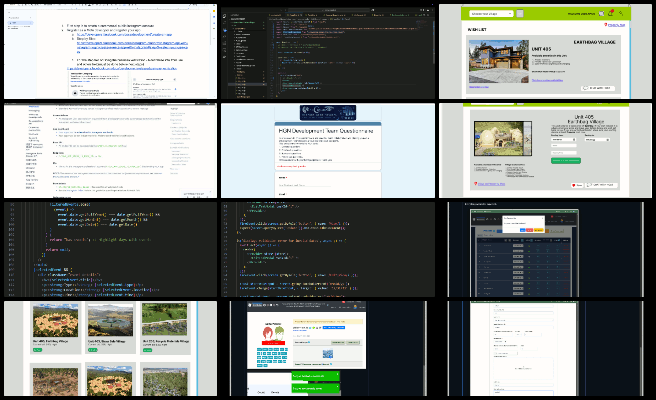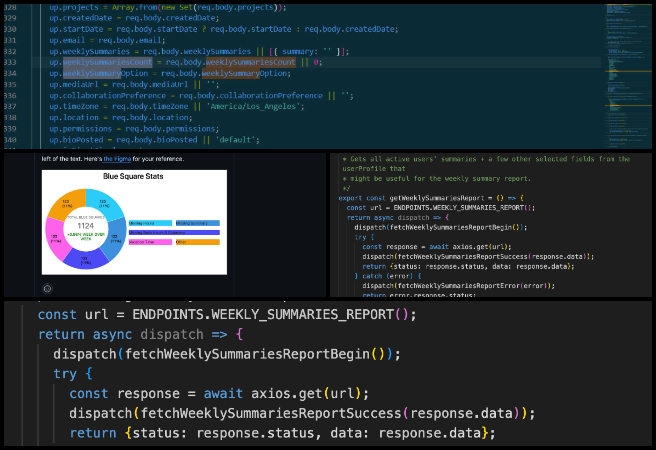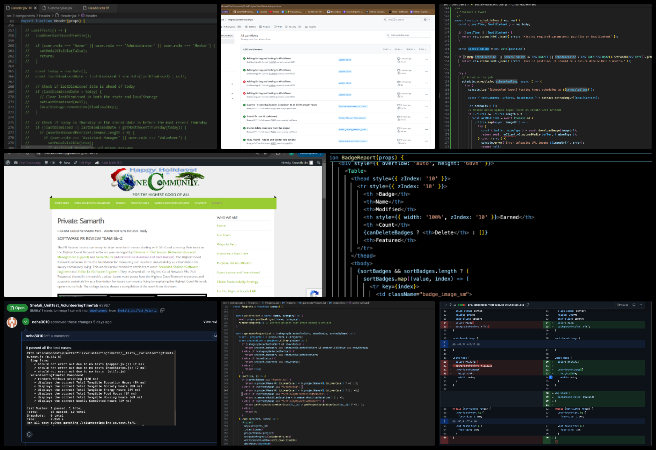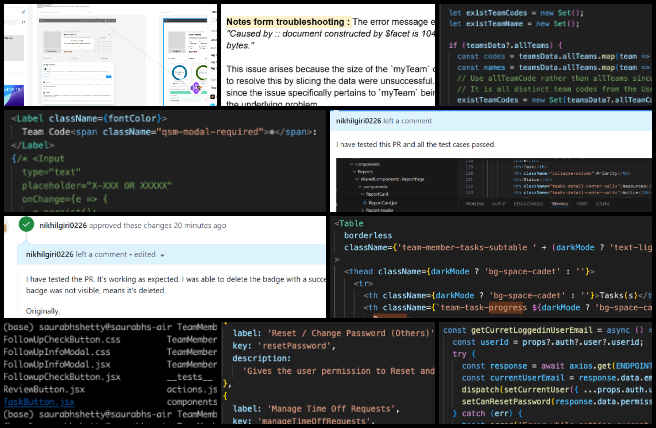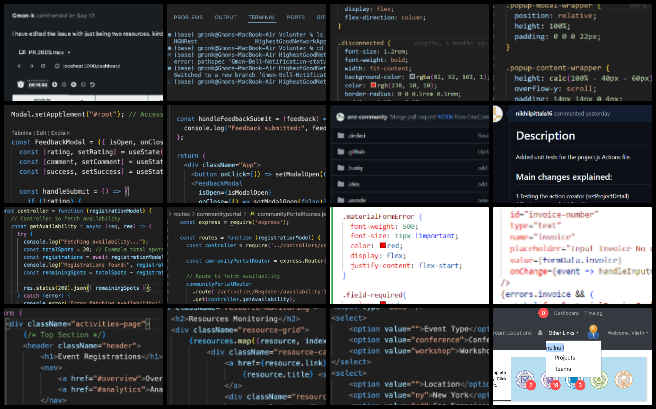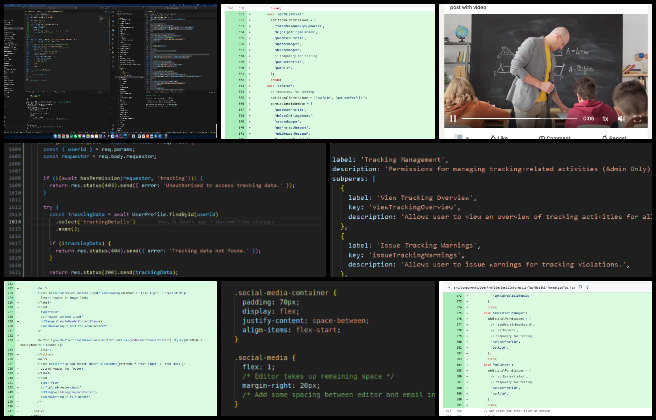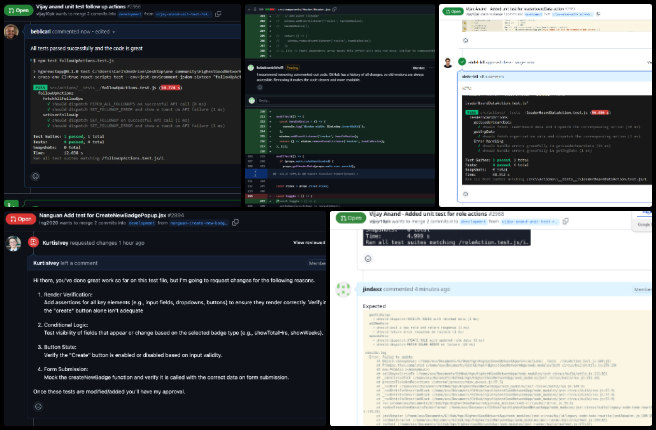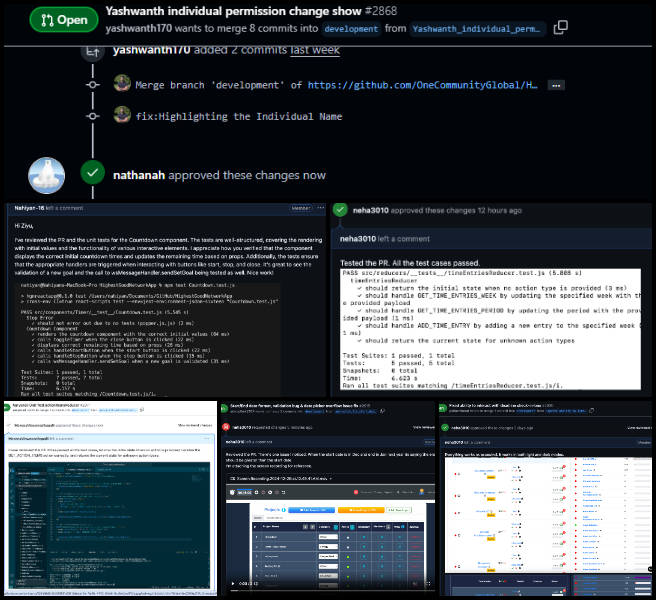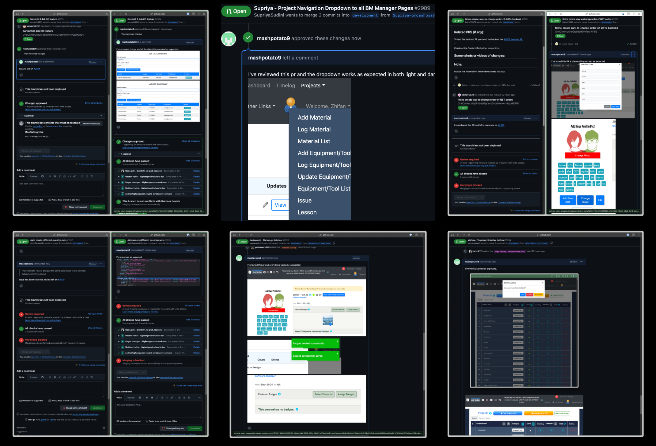Sustainable Common Sense – One Community Weekly Progress Update #615
Let’s open source and free-share everything needed for sustainable common sense. One Community is doing this by creating DIY-replicable models for food, energy, housing, education, for-profit and non-profit economic design, social architecture, fulfilled living, global stewardship practices, and more. Our all-volunteer team is developing a self-replicating model aimed at establishing a global network of teacher/demonstration hubs focused on regenerating our planet and evolving sustainability for “The Highest Good of All”.
- Here’s our project overview
- Here’s our world-change methodology
- Here’s how this becomes self-replicating
- Here’s how we are open source and free-sharing all the do-it-yourself designs
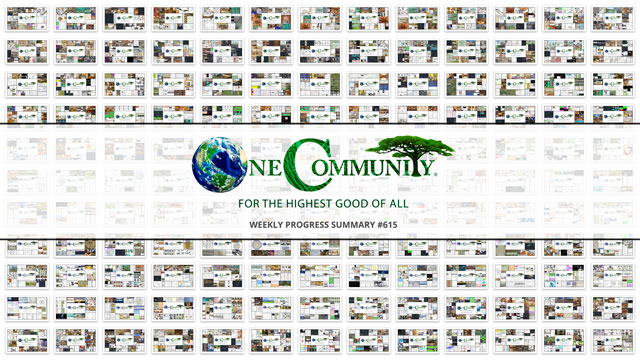
OUR MAIN OPEN SOURCE HUBS
Click on each icon to be taken to the corresponding Highest Good hub page.
One Community’s physical location will forward this sustainable common sense movement as the first of many self-replicating teacher/demonstration communities, villages, and cities to be built around the world. This is the December 30th, 2024 edition (#615) of our weekly progress update detailing our team’s development and accomplishments:
Sustainable Common Sense
One Community Progress Update #615
DONATE | COLLABORATE | HELP WITH LARGE-SCALE FUNDING
CLICK HERE IF YOU’D LIKE TO RECEIVE AN EMAIL EACH WEEK WHEN WE RELEASE A NEW UPDATE
YOU CAN ALSO JOIN US THROUGH SOCIAL MEDIA
ONE COMMUNITY WEEKLY UPDATE DETAILS
HIGHEST GOOD HOUSING PROGRESS
 One Community is forwarding sustainable common sense through Highest Good housing that is artistic and beautiful, more affordable, more space efficient, lasts longer, DIY buildable, and constructed with healthy and sustainable materials:
One Community is forwarding sustainable common sense through Highest Good housing that is artistic and beautiful, more affordable, more space efficient, lasts longer, DIY buildable, and constructed with healthy and sustainable materials:
- Learn about: Our Upcoming Crowdfunding Campaign
- Learn about the different village models: 7 Sustainable Village Models
- Visit the open source portals for the first two: Earthbag Village OS Hub | Straw Bale Village OS Hub
This week, Adefola (Fola) Madehin (Electrical Design Specialist) continued his work with Earthbag Village electrical designs. Fola reviewed the electrical notes from a core team member regarding the special electrical design requested for the EarthBag Village 4 Dome project. He analyzed the required changes and evaluated how to integrate the recommendations into the design. The modifications involve individual circuit control for each room instead of centralized control. The Earthbag Village is the first of 7 to be built as the housing component of One Community’s open source model for sustainable common sense. See some of his work in the collage below.
Akshit Sethi (Architectural Designer) continued working on updating the Earthbag Village SketchUp and AutoCAD layouts. Akshit refined the SketchUp model for the domes to align with the design document, focusing on incorporating a below-grade egress window. He also developed multiple options for the window, ensuring they met relevant building codes. These updates aimed to refine the model and improve compliance with design and safety requirements. The Earthbag village is the first of 7 villages to be built as part of One Community’s open source model for sustainable common sense. See his work in the collage below.
Manjiri Patil (Mechanical Design Engineer) continued helping to complete the Vermiculture Toilet engineering and designs. Manjiri worked on a formatting document outlining essential guidelines and rules for completing various types of documents. She also prepared a detailed checklist to accompany the guide, intended to serve as a reference for team members to ensure accuracy and consistency in drafting documents. This approach for sustainable common sense supports the development of innovative solutions that are both environmentally friendly and effective. See below for pictures related to this work.
Yi-Ju Lien (Environmental Engineer) continued her work on the Open Source DIY Dam Design for Water Retention, Pond and Lake Creation, etc. content and Earthbag Village LEED points related to stormwater retention. This week, Yi-Ju worked on the content for dam risk assessment and management. Building on last week’s work on risk analysis and estimation methods, she focused on explaining various types of risk assessments, the concept of tolerable risk, and the use of risk diagrams in the assessment process. She also addressed risk reduction measures and the risk management framework. Additionally, Yi-Ju worked on finalizing the updates for the hydropower project, ensuring that the content on the webpage was accurate and up to date; this relates to sustainable common sense. See some of the work done in the collage below.
DUPLICABLE CITY CENTER PROGRESS
 One Community is forwarding sustainable common sense through a Duplicable and Sustainable City Center that is LEED Platinum certified/Sustainable, can feed 200 people at a time, provide laundry for over 300 people, is beautiful, spacious, and saves resources, money, and space:
One Community is forwarding sustainable common sense through a Duplicable and Sustainable City Center that is LEED Platinum certified/Sustainable, can feed 200 people at a time, provide laundry for over 300 people, is beautiful, spacious, and saves resources, money, and space:
- Learn about this building and it’s function: Duplicable City Center Open Source Hub
Faeq Abu Alia (Architectural Engineer) continued his work on the Duplicable City Center kitchen shelving and adding dry-storage food items. He completed rendering Rooms 10 and 11 in Lumion, focusing on refining materials, adjusting decorations, and fine-tuning proportions to enhance the walkthrough video. Faeq incorporated feedback from the recent review to ensure the designs adhered to project specifications, improving both functionality and visual presentation to align with the project’s overall goals. The Duplicable City Center represents a fundamental element of One Community’s open-source approach, dedicated to the mission of sustainable common sense. View examples of this work in the pictures provided below.
Jason Bao (Architectural Designer) continued working on producing renders for the Duplicable City Center library. He completed the final pictures and video renders of the library area and uploaded them for review. Tasks included finalizing high-quality renders of the birthday scene, incorporating feedback, and replacing non-sustainable elements in the model with updated decorations for a more sustainable design. Adjustments were made to textures and lighting in Lumion, followed by testing and producing the final renders of the updated scene. The SketchUp and Lumion models were further refined to address bugs and improve textures for a revised series of video renders. Additional adjustments included extending the duration of some video scenes, adding lighting for dusk and nighttime renders, and producing high-quality exterior and interior shots. When nighttime video renders did not meet the desired fidelity, alternate still images were rendered. All updated images and video renders were completed and uploaded to Dropbox for final review. The Duplicable City Center is a foundational part of One Community’s open-source model, which excels in sustainable common sense. This approach is integral to their mission of sustainable common sense through innovative and scalable solutions. See some of this work in the pictures below.
Mohammed Maaz Siddiqui (Architect) continued working on the cupola renders for the Duplicable City Center project. He worked on creating a 3D sundeck scene by searching for and optimizing models of people and objects to be included. The scene was designed to showcase different activities, including group exercises like yoga, gym workouts, and events such as sundowner parties. After establishing the basic layout, he integrated the models and positioned them to represent how the space could be used for these activities. The rendering process was time-consuming due to the large size of the 3D models. Within One Community’s open-source framework, the Duplicable City Center plays a central role in the mission of sustainable common sense. The images below showcase some of this work.
Nimika Devi (Architect) continued her contributions to the landscape design and development of the Duplicable City Center‘s urban farm. She worked on the vegetation area and the barn area, adding background vegetation to enhance realism. Several elements and activities were modified, and different types of vegetation were introduced in the background. HD-quality rendered images of the vegetation area were exported from various angles. Within One Community’s open-source framework, the Duplicable City Center plays a central role in the mission of sustainable common sense. The images below showcase some of this work.
Yan Zu (Architectural Designer) continued her work on the greenhouse area of the Duplicable City Center. She enhanced the greenhouse by adding people and plants to its interior and exterior, creating a more dynamic and interactive environment. Yan focused on the interior pond, adding details such as stones, reeds, and textural elements to improve its realism. These updates refined the overall design and usability of the greenhouse, emphasizing the integration of natural elements and human activity within the space. Within One Community’s open-source framework, the Duplicable City Center plays a central role in the mission of sustainable common sense. The images below showcase some of this work.
HIGHEST GOOD FOOD PROGRESS
 One Community is forwarding sustainable common sense through Highest Good food that is more diverse, more nutritious, locally grown and sustainable, and part of our open source botanical garden model to support and share bio-diversity:
One Community is forwarding sustainable common sense through Highest Good food that is more diverse, more nutritious, locally grown and sustainable, and part of our open source botanical garden model to support and share bio-diversity:
- Learn about the structures: Hoop House Hub | Aquapini & Walipini Open Source Hub
- See what we’ll be growing: Gardens & Hoop Houses | Large-scale Structures | Food Forest | TA
This week, the core team continued working on the Earthbag Tools, Equipment, and Material/Supplies lists, adding shared items identified from the goat, chicken, and rabbit projects. These items, including wire rope clips, a 10-foot tube gate, gate latches and hinges, woven wire fencing, calipers, string line, and a string line level, are utilized across multiple projects within One Community. Items specific to individual projects were excluded from the master list. The Highest Good Food initiative is a key component of One Community’s open source plans, focused on sustainable common sense, and exemplifies the organization’s commitment through innovative design and implementation. Below are some of the images showcasing this work.
Jay Nair (BIM Designer) continued working on Aquapini and Walipini Planting and Harvesting lighting and HVAC design. He updated the document with missing plant lighting requirements and recalculated the annual lighting energy needs for Walipini 1, accounting for seasonal variations. The research was implemented on integrating Bitcoin miners as a potential heating source for the greenhouse during colder months. Additionally, updates were made to the lighting and ventilation requirements for Walipini 2. The document was prepared for review to ensure compliance with the website’s standards. The Highest Good food initiative is a key component of One Community’s open source plans, focused on sustainable common sense, and exemplifies the organization’s commitment through innovative design and implementation. Below are some of the images showcasing this work.
Junyi Shi (Landscape Architect) continued working on developing a design for Walipini #2 as a part of Aquapini and Walipini Planting and Harvesting project. She made adjustments to the camera angles and parameters in the Lumion rendering software to optimize the presentation of design concepts and spatial perception. The rendered images focused on highlighting the interaction between spaces and people, ensuring accurate arrangement of plants, and maintaining the overall cohesiveness of the space. The Highest Good Food initiative is essential to One Community’s open source plans, focused on sustainable common sense. Her contributions are highlighted in the collage below.
Purva Yatindra Borkar (Landscape Architect) continued with her work on creating a final PDF document to achieve a polished and cohesive appearance for Aquapini and Walipini Planting and Harvesting structures. She completed her bio information for an official announcement, highlighting her expertise and contributions. She also finalized the 2D design renders essential for the project’s success. These renders effectively illustrate the functional aspects of the layout, including detailed plans for plant selection and water management strategies, ensuring clarity and precision in the final design presentation. As part of One Community’s open source efforts, the Highest Good food initiative embodies a commitment to sustainable common sense. The images below offer a glimpse into these ongoing efforts.
Surya Teja Anumolu (Volunteer Mechanical Engineer) continued his work on the Highest Good Food; most sustainable construction and agricultural equipment. He focused on refining Aquapini and Walipini Planting and Harvesting structures to include documentation, focusing on why sustainability for construction equipment is important, and brought resources from EPA and Euro standards to tie them with the sustainability goals of construction equipment. In terms of sources, he found sustainability goals from brands such as Caterpillar, John Deere, and Case to understand the goals with metrics that can be digestible to a potential customer like One Community. The Highest Good Food initiative is a key component of One Community’s open-source plans, focused on sustainable common sense. See his work in the collage below.
Syahrina Maulida Majid (Volunteer Nutritionist) continued working on creating menu implementation tutorials as a part of One Community’s Transition Food Self-Sufficiency Plan. She worked on the master recipe template, analyzing its structure to better understand its functionality and usability. A separate copy of the template was made to test various input values, observing how adjustments impacted calculations without affecting the original version. During this process, Syahrina identified areas that could benefit from clarification or adjustments to improve the template’s adaptability for different dietary needs and group sizes. She documented questions and specific areas for potential improvement, which can support future updates. Additionally, she began drafting a basic tutorial, outlining key steps for users to effectively navigate the template, aiming to streamline its usability for end-users. The Highest Good food initiative plays a crucial role in One Community’s open source plans, focused on sustainable common sense. Her work is showcased in the collage below.
Tanmay Koparde (Industrial Engineer And Team Administrator) continued working on the Menu Supply Chain and Shopping Plan, Cost Analysis, and Food Procurement and Storage Plan to streamline organizational workflows and enhance efficiency. He reviewed existing plans and added sections on waste management, water management, transportation, shipping, inventory management, and evaluation to align with project objectives. Focusing on Mariposa, California, he adjusted strategies to meet regional needs. After submitting the case review, Tanmay started integrating his work into the Food Self-Sufficiency Transition Plan and has begun updating storage details for the page. The Highest Good Food Initiative is a key component of One Community’s open source plans, focused on sustainable common sense. See his work in the collage below.
Vatsal Tapiawala (Mechanical Engineer) continued working on integrating ideas from Paul Wheaton’s “Truly Passive Greenhouse” designs into the Aquapini/Walipinis structures. He updated the report format in line with the suggested changes and started preparing the third draft. He identified and corrected calculation errors present in the previous draft to ensure accuracy. Additionally, Vatsal began running structural analysis for Walipini 1 based on the revised calculations, focusing on evaluating structural performance under updated loading conditions. The Highest Good food Initiative is a key component of One Community’s open source plans, focused on sustainable common sense. See his work in the collage below.
Ziyi Chen (Landscape Designer) continued working on the design of the outdoor spaces for the Aquapini/Walipinis structures. She adjusted the plant layout and annotations in the CAD construction documents based on the completed models. The adjustments focused on the southern areas of the Zen Structure and the Aquapili Structure, where the understory canopy plants were rearranged and refined. Additional tasks included adding hatching details to the road sections. The Highest Good food initiative is a key component of One Community’s open source plans, focused on sustainable common sense. See her work in the collage below.
HIGHEST GOOD ENERGY PROGRESS
 One Community is forwarding sustainable common sense through Highest Good energy that is more sustainable, resilient, supports self-sufficiency and includes solar, wind, hydro and more:
One Community is forwarding sustainable common sense through Highest Good energy that is more sustainable, resilient, supports self-sufficiency and includes solar, wind, hydro and more:
- Learn about the open source sustainable-energy foundations: Solar, Hydro, and Wind
- Explore our research into the most sustainable products and companies for saving water and energy: Insulation, Eco-laundry, Lightbulbs and Light Bulb Companies, Doors and Door Companies, Windows and Window Companies, Toilets, Faucets and Faucet Accessories, Urinals, and more.
This week, Muhammad Sarmad Tariq (Electrical Engineer) continued helping finish the research and cost analysis for grid-tie vs off-grid solar microgrid design. Sarmad sent the formatted version of the off-grid vs grid-tie solar PV system report to Jae. Jae then provided feedback via a Zoom video call, which Sarmad reviewed and took note of the points mentioned. Sarmad then began making the necessary changes and modifications to the report based on Jae’s feedback. See the Highest Good energy and Highest Good Network pages for more on how this relates to sustainable common sense. View some of the work in the collage below.
Vatsal Hitendra Shah (Volunteer Engineering Project Manager) continued working on updates to the One Community Highest Good energy cost analysis details. This week, Vatsal identified updated costs for a 100kW generator, explored a new quote for a 2000-gallon fuel bladder, and reviewed battery pack options. On the Highest Good Network project, Vatsal met with Chitra, received feedback on the Building and Inventory Management dashboard user manual, and reviewed a document listing dashboard features to refine the manual further. This relates to sustainable common sense. View some of the work in the collage below.
Viktoriia Zakharova (Administrative Assistant) continued her research to complete the update of the Most Sustainable Lightbulbs and Light Bulb Companies. This week, Viktoriia revised the lightbulb alternatives for the Duplicable City Center, updating both the spreadsheet guide and the webpage. She clarified the alternatives’ choices, updated lightbulb images, and added key features and specification sheets to the webpage guide. She also ensured consistency between the spreadsheet and webpage lightbulb choices which leads to sustainable common sense. See some of the work done in the collage below.
HIGHEST GOOD EDUCATION PROGRESS
 One Community is forwarding sustainable common sense through Highest Good education that is for all ages, applicable in any environment, adaptable to individual needs, far exceeds traditional education standards, and more fun for both the teachers and the students. This component of One Community is about 95% complete with only the Open Source School Licensing and Ultimate Classroom construction and assembly details remaining to be finished. With over 8 years of work invested in the process, the sections below are all complete until we move onto the property and continue the development and open sourcing process with teachers and students – a development process that is built directly into the structure of the education program and everything else we’re creating too:
One Community is forwarding sustainable common sense through Highest Good education that is for all ages, applicable in any environment, adaptable to individual needs, far exceeds traditional education standards, and more fun for both the teachers and the students. This component of One Community is about 95% complete with only the Open Source School Licensing and Ultimate Classroom construction and assembly details remaining to be finished. With over 8 years of work invested in the process, the sections below are all complete until we move onto the property and continue the development and open sourcing process with teachers and students – a development process that is built directly into the structure of the education program and everything else we’re creating too:
- Program Overview: Education Open Source Hub
- How the components work together in designing human orchestrated eco-abundance: How to use the Education for Life Program
- Lesson Plans for Life – Lesson Plans How-to
- Foundations of Outstanding Leaders, Teachers, and Communicators
- Curriculum for Life
- Teaching Strategies for Life
- Learning Tools and Toys for Life
- Evaluation and Evolution
This week, Apoorv Pandey (Mechanical Engineer) continued helping with the engineering details for the Ultimate Classroom part of the Highest Good Education component. He completed working on the final draft of the Structural Engineering Report for the Ultimate Classroom Project, incorporating the changes recommended in the “One Community Reports and Tutorials Finalization” Google doc. He added the summary, resources, and FAQ section of the report. Apoorv also focused on reformatting the write-up as requested in the guidelines and incorporating high-quality images of the work done. The final draft is now ready for review. The One Community model of combining forward-thinking education with sustainably built classrooms like this is an excellent example of sustainable common sense. This approach exemplifies sustainable common sense by creating environments fostering collaboration and innovation. See the collage below for his work.
HIGHEST GOOD SOCIETY PROGRESS
 One Community is forwarding sustainable common sense through a Highest Good society approach to living that is founded on fulfilled living, the study of meeting human needs, Community, and making a difference in the world:
One Community is forwarding sustainable common sense through a Highest Good society approach to living that is founded on fulfilled living, the study of meeting human needs, Community, and making a difference in the world:
- Read the Highest Good society overview: Highest Good Society
- Learn about the model for fulfilled living and sharing: A Day in the Life
- Learn about the 4 economic models: RBE | For-profit | Non-profit | Entrepreneurship
- Learn about our open source community collaboration and management software: The Highest Good Network
This week, the core team completed over 49 hours managing One Community’s volunteer-work review not included above, emails, social media accounts, web development, new bug identification and bug-fix integration for the Highest Good Network software, and interviewing and getting set up new volunteer team members. They also shot and incorporated the video above that talks about sustainable common sense and how sustainable common sense is a foundation of the bigger picture of everything One Community is doing. The image below shows some of this work.
Anoushka Hazari (Data Analyst) continued working on code to automate and simplify the Highest Good Network software promotion process. Team pull requests were reviewed, updates were made to the PR review table, and a blog post, along with a collage, was created. An earlier error was also corrected to ensure accuracy. Updates were provided in the HGN spreadsheet, and work from Sheet 4 was reviewed. Execution and debugging of a script were performed, including adjustments to address Twilio-related errors and verification of the pip install command execution. Each function in the script was reviewed to minimize runtime issues. Work continued on managing results using Google Drive and Sheets APIs, with a focus on resolving the OAuth token expiration issue. This involved testing and debugging the implementation of the OAuth 2.0 refresh token mechanism, enabling offline access, securely storing the refresh token, and programmatically obtaining new access tokens to avoid repeated re-authorization. These efforts ensured seamless integration with the containerized environment. Additionally, the dashboard was discussed with Jae, and based on his suggestions, Shreya sought visualization assistance. Ongoing changes are being made to prepare for an upcoming demo.This version improves sentence structure, eliminates redundancy, and enhances readability. This work helps One Community’s mission of sustainable common sense and reinforces our commitment to sustainable common sense. The following images show her work for the week.
Chitra Siddharthan (Data Analyst And Team Administrator) continued focusing on existing web pages of the HGN Phase II website, starting with testing the functionality of the implemented wireframes to ensure they meet expected requirements. She worked on testing pull requests marked as “Completed” in the Phase 2 WBS spreadsheet, covering tasks from Task 1 to Task 7. She tested PR #2989, which introduced a Project Navigation Dropdown for all BM Manager Pages, submitted by Supriya, and PR #2982, related to the Add Material form, submitted by Rishitha. Additionally, Chitra reviewed the progress of the User Manual for HGN Phase 2 during a meeting with Vatsal, where they discussed ongoing updates and examined the sections that have been completed so far. This work helps One Community’s mission of sustainable common sense and reinforces our commitment to sustainable common sense. The following images show her work for the week.
Durgeshwari Naikwade (Data Analyst) continued working on projects involving Google Analytics and LinkedIn Analytics. She created a Google Sheet dashboard template titled ‘[NEW] Social Media Growth Tracker – Last 30 Days,’ using mock data from platforms including Facebook, Instagram, LinkedIn, and X (formerly Twitter). The dashboard tracks key metrics such as impressions, clicks, and click-through rates (CTR) for each platform and incorporates a line chart to visualize total social media impressions and clicks over the past year. She also led the Google Analytics meeting, focusing on finalizing the progress tracker for the Google Analytics project aimed at improving website performance. During the meeting, Durgeshwari assigned tasks to team members, including keyword research to enhance SEO and increase organic traffic to the website. This work helps One Community’s mission of sustainable common sense and reinforces our commitment to sustainable common sense. The following images show her work for the week.
Feras Rehman (Data Analyst) continued working on developing One Community’s Mastodon account and strategy. He also managed his part of the One Community Updates Blog by reviewing and adding images to supplement the summary. Five more Mastodon posts were scheduled on Buffer for the upcoming week. A weekly summary was reviewed and images were added to enhance it. Targeted Mastodon strategies were developed and implemented, increasing post reach by five times through optimized hashtag usage and improved post structuring. Feedback was provided on the work of Sneka, Ratna, Saumit, and Rahul, addressing the errors identified. This work helps One Community’s mission of sustainable common sense and reinforces our commitment to sustainable common sense. The following images show her work for the week.
Hritvik Mahajan (Data Analyst) continued focusing on multiple tasks related to marketing, promotion, software development, and administrative activities. For marketing and promotion, he updated the social media tracking Google Sheet using different formulas and charts, reposted high-engagement posts on Twitter communities to analyze engagement trends, and refined the strategy management sheet. In HGN software development, Hritvik continued designing the social media scheduler using Figma and tested several front-end pull requests, documenting new bugs and coordinating with team members on Slack to address changes and resolve merge conflicts. Additionally, he provided feedback and comments on admin team contributions for Blog #613 in the Step 4 document. This work helps One Community’s mission of sustainable common sense and reinforces our commitment to sustainable common sense. The following images show his work for the week.
Raghav Dinesh Pamuru (Product Manager) continued focusing on designing and building a Google Sheets dashboard to simplify tracking and analyzing social media engagement. He focused on creating a tutorial for the One Community dashboard. Tasks included organizing content, drafting step-by-step instructions, and designing visuals to simplify navigation and usage. Efforts were concentrated on ensuring clarity and accessibility for users by aligning the tutorial with the dashboard’s key features and functionalities. Collaboration with team members was undertaken to verify accuracy and gather feedback, which informed revisions to improve the tutorial’s usability. The finalized draft aims to provide users with a straightforward guide to maximize the effectiveness of the dashboard. This work helps One Community’s mission of sustainable common sense and reinforces our commitment to sustainable common sense. The following images show his work for the week.
Rahul Bavanandan (Data Analyst) continued working on several key projects within the Highest Good Network software, One Community’s Reddit presence, and administration. He prepared a Social Media Tracking Google sheet for Reddit to track the social media marketing strategy and added all Reddit posts and comments to the sheet. For One Community, he accessed the blog from the Defining Our Avatar page, confirmed the version number, and optimized the blog using the RankMath Tutorial for advanced SEO integration. He also completed the Weekly Content Administrator – Senior Administration Role by combining all administrators’ blogs into the main blog, creating a PDF of the complete page, and marking any areas that weren’t justified before moving the content. In addition, he worked on the HGN Phase 2 Evolution project, focusing on translating the Figma designs for the Phase 2 dashboard. This work helps One Community’s mission of sustainable common sense and reinforces our commitment to sustainable common sense. The following images show his work for the week.
Shireen Kayal (Humanitarian Program Developer & Data Manager) continued her work on branding graphics for all of One Community. This week she created new graphics for both the Highest Good Energy page and the For The Highest Good of All® page. She focused on several key projects, including creating new images for the petition and updating the open-source holistic education model. To address design needs, Shireen developed a fresh set of images while seeking feedback on them. Additionally, she updated various images, including the icons in the Open-Source Holistic Farming System and the Bernard Shaw quote image, providing versions both with and without URLs. Shireen also enhanced the Highest Good Education image and revamped the MoveOn.org and Change.org images to include the benefits of the petition. She revised the Open-Source Holistic Farming System images and provided their URLs, along with updating the Food Infrastructure Rollout points based on the recommendations received. To conclude her week, she fixed the last slide of the weekly progress video and ensured it was of the highest quality. This work helps One Community’s mission of sustainable common sense and reinforces our commitment to sustainable common sense. The following images show her work for the week.
Yash Shah (Data Analyst and Team Administrator) continued his admin work and managed the social architecture component of the Highest Good Network software. He had a call with Nishita, Pratyanshu, and Bhavya to discuss the project flow and assigned tasks to Nishita. Additional tasks were allocated to Nishita, Khushi, and Bhavya for Phase 3. Yash also met with Denish to explain the three different login types for the Access page and added tasks for Sharadha. Other responsibilities included creating a blog for Dev Dynasty, organizing the weekly folder, compiling a collage, and editing the summary to include contributions from all team members. This work helps One Community’s mission of sustainable common sense and reinforces our commitment to sustainable common sense. The following images show his work for the week.
ADMINISTRATION TEAM A-Z
The Administration Team’s summary, covering their work administrating and managing most of One Community’s ongoing process for sustainable common sense was managed by Sneka Vetriappan (Data Analyst) and includes Jessica Fairbanks (Administrative Assistant), Jibin Joby (Data Analyst), Kishan Sivakumar (Administrative Assistant and Software Team Manager), Kushagra Bubna (Data Analyst), Olawunmi “Ola” Ijisesan (Administrative and Management Support), Ratna Meena Shivakumar (Data Analyst and Admin), Saumit Chinchkhandi (Administrative Assistant and Software Engineer), Shrinivas Patil (Software Engineer), Vishnu Murali (Data Analyst) and Zuqi Li (Administrative Assistant and Economic Analyst).
This week, Jessica completed her administrative tasks, created a collage showcasing the team’s work, uploaded the team summary, and worked on improving the layout of the Highest Good food page. Jibin reviewed his team’s work, created collages, resized images, participated in the weekly Google Analytics meeting, and explored tools for web page analysis. Kishan carried out senior admin duties by reviewing volunteer documents and SEO pages, addressing requests, and making updates based on feedback. Kushagra finalized Blog 614, provided feedback on submissions, analyzed LinkedIn analytics dashboards, prepared documentation for enhancing reporting structures, and explored leveraging data in Google Sheets. Ola monitored team progress, reviewed manager reports, updated weekly summaries with relevant images, and ensured accountability through follow-ups. Incorporating sustainable common sense into her workflow, Ola monitored team progress, reviewed manager reports, updated weekly summaries with relevant images, and ensured accountability through follow-ups. Ratna prepared weekly summaries, created collages, scheduled social media posts, developed AI music prompts, documented processes, and managed recruitment efforts.
Saumit handled pull request workflows, updated WordPress pages, carried out frontend testing on multiple PRs, and resolved development issues via Slack. Shrinivas managed blogs for two teams, provided individual feedback, assisted with admin feedback spreadsheets, and tested pull requests across devices. Sneka focused on timelog management, feedback, tutorial development, reviewing site formatting, and updating SEO pages, weekly summaries, and collages. Vishnu provided feedback to the Lucky Star team, contributed charts and reports on page speed and SEO metrics, participated in the Google Analytics meeting, and worked on improving Rank Math tracking in WordPress. Zuqi organized the Graphic Design Team’s weekly summary, analyzed Google AdWords and Analytics, and suggested updates to enhance website performance and usability, including tracking blog performance and donation completions. One Community’s model for sustainable common sense includes developing and maintaining a supportive administration team like this. You can see the work for the team in the image below.
GRAPHIC DESIGN TEAM
The Graphic Design Team’s summary was managed by Zuqi Li (Administrative Assistant and Economic Analyst) and included Anusha Tariq (Graphic Designer), Aurora Juang (Graphic Designer), Junyuan Liu (Graphic Designer, UI/UX Designer), and Pranali Desai (Communication Designer), covering their work on graphic designs for sustainable common sense. This week, Anusha focused on preparing social media visuals by researching appropriate images to complement the provided text. She reviewed multiple image options, edited them to enhance visual appeal through color refinements, shadow adjustments, and element modifications, and ensured each image met formatting and stylistic requirements for consistency. Aurora finalized the remaining bio announcements for volunteers by sourcing additional visuals and completed all previously assigned bios. She also updated and revised social media campaign designs and refined the final version of the brand book, ensuring the creative outputs aligned with the principles of sustainable common sense.
Junyuan completed bio content for three assigned individuals, creating images and performing web editing for their bios. He worked on creating social media content by collecting images, exploring design options, and completing three new images through an iterative process. Initial steps were taken to gather images and develop design ideas for the next image, along with brainstorming future approaches. Pranali revised and finalized visuals for the “most sustainable” graphics, incorporating feedback by updating content and adding more specific data points. She updated data and statistics to reflect accurate and relevant information, replacing older figures with precise data. See the Highest Good Society pages for more on how this contributes to sustainable common sense. See the collage below to view some of their work.
HIGHEST GOOD NETWORK PROGRESS
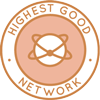 One Community is forwarding sustainable common sense through open source Highest Good Network® software that is a web-based application for collaboration, time tracking, and objective data collection. The purpose of the Highest Good Network is to provide software for internal operations and external cooperation. It is being designed for global use in support of the different countries and communities replicating the One Community sustainable village models and related components.
One Community is forwarding sustainable common sense through open source Highest Good Network® software that is a web-based application for collaboration, time tracking, and objective data collection. The purpose of the Highest Good Network is to provide software for internal operations and external cooperation. It is being designed for global use in support of the different countries and communities replicating the One Community sustainable village models and related components.
- Learn about our open source community collaboration and management software: The Highest Good Network
This week, the core team continued their work on the Highest Good Network PRs testing, confirming the fixed PRs and resolving several issues. They completed testing for multiple HGN PRs, confirming fixes for issues including improvements to the “My Team” filter (#2858), a refresh issue on the Badge Management page (#2830), a white screen error related to saving featured badges (#2825), adding sort and search functionality to the inventory type list (#2756), a cropped “Ready for Review” dropdown (#2848), a page freeze caused by clicking the active button (#2823), resource dot centering on task pages (#2789), and a new user popup issue (#2881). Outstanding issues included a missing team code requirement for creating new users (#2845), a persisting cropping issue in the “Ready for Review” dropdown when viewed on small screens (#2848), challenges with adding, editing, and deleting lost hours (#2710), and improvement needs for team hours visualization on the Reports page (#2855). Additionally, they provided detailed requirements for handling missed Weekly Summaries in Core Team roles, which add one hour to the required weekly hours. She also assigned a task to volunteer to implement auto-refresh functionality for user deletions without losing filters, allocating 20 hours for completion. We continue to focus on sustainable common sense that works for everyone through iterative improvements and user-centric solutions. See the Highest Good Society and Highest Good Network pages for more on how this relates to sustainable common sense. The collage below shows some of their work.
ALPHA SOFTWARE DEVELOPMENT TEAM
The Alpha Team’s summary, covering their work on the Highest Good Network software, was managed by Lin Khant Htel (Frontend Software Developer) and includes Nanguan Lin (Software Developer), Sheetal Mangate (Software Engineer), and Sujith Reddy Sudini (Full-Stack Software Developer). This week, Lin reviewed and approved PR #2985, tested the codebase locally with all test cases passing, and gained additional understanding of the project. He also reviewed Alpha team members’ weekly summaries, photos, and videos, assigned new tasks, and managed team responsibilities by updating task hours and ensuring proper task allocation. Additionally, Lin explained management duties to other team members while continuing to oversee task assignments. Sheetal focused on exploring the functionality of action weeklySummaries, reviewing the code in weeklySummaries.js to understand its workings and data mocking, which will aid in creating test cases. She developed and tested scenarios for fetch weekly summaries JS files, ensuring a meticulous approach that embodies sustainable common sense.
Nanguan worked on the social media auto-posters and onlywire replacement subtask for Reddit, reviewed existing pull requests, and studied Reddit’s API development guidelines to enable post creation. He also modified his pull request for CreateNewBadgePopup, incorporating Kurtislvey’s feedback, including updates to render verification and conditional logic. Sujith enhanced the resource request form by improving user experience and input fields, including adjustments for date formats, placeholders, and validation using JavaScript. He also added functionality for file uploads and structured phone number inputs, streamlining the form’s usability and improving clarity in data collection. Learn more about how the Highest Good Network will measure and assist in sustainable common sense in the Highest Good Network open-source hub. The collage below shows a compilation of the work from this team.
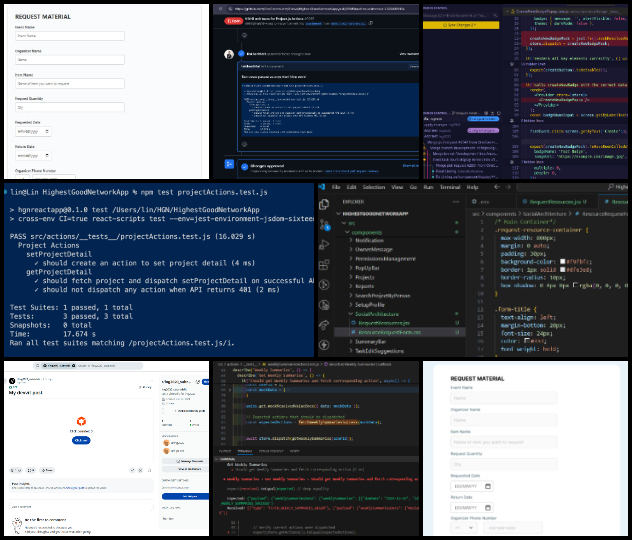
BINARY BRIGADE SOFTWARE DEVELOPMENT TEAM
The Binary Brigade Team’s summary overseeing advancements in the Highest Good Network software was managed by Vijay Anand Pandian (Full Stack Software Engineer) and includes Aaryaneil Nimbalkar (Software Developer), Anirudh Sampath Kumar (Software Developer), Ashish Nagaraju (Software Engineer), Deepthi Kannan (Software Engineer), Geeta Matkar (Software Engineer), Sandhya Adavikolanu (Software Developer), Xiaolu Li (Software Engineer) and Ziyu Chu (Volunteer Software Engineer). The Highest Good Network software is how we’ll be managing and objectively measuring our process for sustainable common sense through our social architecture, construction, production, and maintenance processes.
This week, Aaryaneil reviewed the documentation for Dropbox to understand its functions and created a workflow outlining processes for creating user folders, managing user access, and deleting folders. He wrote code to automate the creation of folders within Dropbox and tested it under the basic plan. Additionally, he implemented functionality to assign editor permissions to users for shared folders, enabling them to add files. In alignment with sustainable common sense, he ensured that the automated processes were efficient and minimized redundant resource usage while adhering to organizational needs. Aaryaneil also developed code to remove users from shared folders once they leave the organization and to delete folders when users are no longer part of the organization. Anirudh reviewed and contributed to several pull requests for the Highest Good Network App, addressing various code updates and feature implementations. The reviewed pull requests included PRs 2979, 2971, 2972, 2973, 2975, 2982, 2988, 2985, 2980, and 2968, each involving collaboration and analysis to ensure code quality and alignment with project requirements. Additionally, he identified and resolved a UI issue where the “Archive” button on the Projects page displayed in light mode while the page was set to dark mode, raising PR 2981 to implement the fix. His approach exemplified sustainable common sense, wherein practical and effective solutions were prioritized to ensure long-term project success without sacrificing quality or user experience.
Ashish worked on Phase 2 Bug 21 related to the materials list display. He reviewed the original page design shared by Jae and compared it to the current implementation to identify discrepancies. His efforts to understand the backend code included adding new materials, but the updates did not appear in the database. In tackling these challenges, the team adopted a “sustainable common sense” approach, ensuring solutions were pragmatic and future-proof. He continues to analyze the backend to determine the cause of the issue. Deepthi worked on improving the leaderboard header by addressing specific issues to enhance its functionality and appearance. In addition, Deepthi resolved merge conflicts in existing Pull Requests, ensuring they were addressed effectively and prepared for merging. She also made updates to the weekly summaries page, focusing on fixing the overall alignment. Geeta resolved a header text issue by restructuring the header section into left, center, and right divisions. Additionally, she identified and fixed a problem in the existing code where the user profile image was not loading correctly. Geeta also raised a pull request to implement the fixes (PR #2987). In their approach, both Deepthi and Geeta demonstrated an admirable commitment to sustainable common sense, ensuring long-term solutions that align with both functionality and user experience.
Sandhya resolved an issue with the TaskCompletedBarChart component on the Total Org Summary page, where volunteer statistics data failed to load due to a missing authentication token in the API request. She verified the front-end code, identified the absence of authorization headers as the root cause, and collaborated with the backend team to address it. In addressing these challenges, Sandhya and the team prioritized a solution rooted in sustainable common sense, ensuring long-term functionality and efficiency. After the backend updates, she updated the front-end code, tested the solution, and ensured the component functioned correctly. Sandhya finalized the implementation by refining the code and submitting a detailed pull request with the changes and documentation. Vijay focused on implementing unit tests for various action creator and reducer files in the HGN software project. He completed unit test implementations for the roleActionCreator file (PR #2988), the leaderboardDataActionCreator file (PR #2980), and the updatePasswordActions file (PR #2979). Additionally, he worked on unit tests for the roleActions file, enhancing test coverage and ensuring code reliability across the project, all while maintaining a commitment to sustainable common sense.
Xiaolu completed the unit test for the WeeklySummariesReport/WeeklySummaryRecepientsPopup.jsx component and prepared a pull request. The work covered rendering logic, user interactions, and error handling scenarios to confirm that all core functionalities operated as intended. Code images and a weekly summary video were placed in a designated folder, focusing on coverage for UI elements and data flow. By adhering to principles of sustainable common sense, the team ensured that the tests were both efficient and scalable, promoting long-term maintainability of the codebase. Ziyu began working on unit tests for the Countdown.jsx component. She selected five test cases to validate the component’s structure, functionality, and hooks. Ziyu wrote the specific test code for all five cases. However, during execution, some test cases failed. She submitted a pull request for team review due to time constraints. See the Highest Good Society and Highest Good Network pages for more on how this relates to sustainable common sense. View some of the team’s work in the collage below.
BLUE STEEL SOFTWARE DEVELOPMENT TEAM
The Blue Steel Team’s summary, presenting their work on the Highest Good Network software was managed by Howie Miao (Software Engineer, Team Manager) and includes Nazanin Hashemian (Software Developer), Ramakrishna Aruva (Software Engineer), and Supriya Sudini (MERN Stack Developer). The Highest Good Network software is how we’ll be managing and objectively measuring our process for developing sustainable common sense through our social architecture, construction, production, and maintenance processes. This week, Ramakrishna worked on optimizing the user interface by testing methods to maintain the display of specific icons, such as the “Reports” (R) icon and the “#” symbol. His efforts included implementing various CSS styles and background properties to ensure visual consistency and exploring conditional rendering techniques to manage the display of icons based on specific conditions. He also began developing functionality for navigation to the reports page through user interactions to enable seamless redirection. In the course of these tasks, he consistently demonstrated sustainable common sense, ensuring that each design decision balanced functionality, user experience, and long-term maintainability.
Nazanin identified a bug in the Weekly Summaries component where users were incorrectly highlighted with a yellow background, even when they did not meet the criteria of 80+ tangible hours and at least 8 valid weekly summaries. She updated the logic in BioFunction.jsx and WeeklySummariesReport.jsx to apply the yellow background only to users meeting both criteria. This change exemplifies the importance of applying sustainable common sense in software development, ensuring that logic is both precise and efficient. Supriya worked on improving the CSS of the dropdown menu to enhance its functionality and visibility across project section pages within the application. She increased the z-index of the navbar to ensure dropdown elements appear above other content and modified the .dropdown-menu class to remove height restrictions, allowing vertical scrolling when the number of elements exceeds the viewport height. These updates ensure that all items in the dropdown are accessible and not obscured by the bottom edge of the viewport. Her changes were consolidated into a pull request to standardize the dropdown navigation experience across projects. See the Highest Good Society and the Highest Good Network pages to learn more on how their work contributes to developing sustainable common sense. See below to view images of their work.
CODE CRAFTERS SOFTWARE DEVELOPMENT TEAM
The Code Crafters Team, covering their work on the Highest Good Network software, was managed by Summit Kaushal (Backend Software Developer) and includes Anoushka Gupta (Software Engineer), Ashrita Cherlapally (Software Engineer), Denish Kalariya (Software Engineer), Humera Naaz (MERN developer), Muhideen Mustapha (Software Engineer), Muzammil Mohammed (Software Engineer), Pavan Swaroop Lebakula (Software Engineer), and Pratyush Prasanna Sahu (Software Engineer). The Highest Good Network software is how we’ll manage and objectively measure our process for sustainable common sense through our social architecture, construction, production, and maintenance processes.
This week, Anoushka worked on integrating frontend elements with the backend APIs developed earlier. She addressed the order of the category and summary routers, ensuring they functioned as intended. Additionally, she implemented a summary button on the UI, enabling it to retrieve data from the summaries API in the backend. Modifications were also made to improve the visual appearance of the user interface, enhancing its overall aesthetic appeal. Ashrita worked on updating the backend by modifying the list of users for each badge to be stored as an array. She also focused on making API calls to the relevant endpoints. In parallel, she is implementing a multiselect dropdown on the frontend to allow users to select and display multiple badges. Ultimately, these improvements are a reflection of sustainable common sense, ensuring both functionality and design work harmoniously together.
Denish worked on Phase 3 of the project, focusing on implementing access control for the community portal. He developed a login feature requiring users to authenticate before accessing the portal, enhancing its security framework. Additionally, he worked on designing and building a dashboard for the community portal, which provides an organized interface for users to access various functionalities and relevant information. These tasks contributed to improving both the usability and security of the portal. In his work, sustainable common sense was key to creating a user-friendly and secure environment. Pavan tested the functionalities related to adding a title column and reducing the width of the role column, as well as verifying the search and edit functionality for the title column on both the backend and frontend. Pull requests were raised for these changes. Work on a new functionality will begin with the remaining available time.
Humera focused on improving the badge awarding system to determine eligibility based on hours worked across specific weeks. She used a hashmap to link hours with corresponding weeks, enabling efficient comparisons against predefined badge criteria. She implemented a max-heap to prioritize entries with higher hours for badge evaluation. Challenges with unspecified or incomplete data entries were encountered. The workflow was adjusted to identify and award badges by verifying stored hours and weeks against existing badge thresholds, including logic to update or replace badges when higher achievements were recorded. In this process, a sustainable common sense approach was employed to ensure the system remained efficient and adaptable. Work also included handling edge cases such as rejecting duplicate or invalid badge entries and ensuring the system maintained consistency in recognizing user accomplishments. Muhideen focused on the task to display badges assigned to all users. Key tasks included debugging backend integration issues to accommodate major changes and implementing a multiselect dropdown on the frontend to display various badges. The work aimed to improve functionality and ensure a seamless experience for managing badge assignments.
Muzammil worked on resolving two medium-priority bugs. The first bug involved a category inconsistency in the “create project” feature within the Profile > Projects tab (PR #2385). While it was possible to create a project, select a category, and assign it to an account, the selected category would incorrectly display as “Other” in the Projects tab. A new pull request was required to address the issue, with a Loom video provided to demonstrate the problem. The second task was fixing the color discrepancy in the pie chart on the Reports > People page (PR #2992). Despite merging multiple related pull requests (#2038, #2326, and #1867), the issue persisted in specific navigation scenarios. The pie chart initially displayed uniform colors when accessed but updated to the correct multi-colored display upon revisiting the report. In navigating such complexities, the application of sustainable common sense is crucial to ensuring that each solution not only resolves the immediate issue but also fosters long-term, stable functionality. These tasks highlighted challenges that required further investigation to ensure consistent functionality across the application.
Pratyush created backend files, including eventRouter.js and eventController.js, adding routes and fetch functions to support event registration. On the frontend, he updated files with fetch and post functionalities, identifying the need to understand the token system for backend interaction. While he successfully called eventController.js, he encountered an issue retrieving user input values. His next task involves implementing the authorization and token functions required to pass data seamlessly from the frontend to the backend. Sustainable common sense must be applied when designing token systems to ensure both security and scalability. Summit worked on incorporating functionality to assign the current maximum hour based on the week it was earned, considering whether it was from a prior week or the current week. To address saved tangible hours (savedTangibleHours) that lack an associated date, these hours were assigned to the current week’s date.
For hours derived from time entries, changes were implemented to include earned dates (earnedDates), with end-of-week dates visible in the earnedDates field. The approach involved accounting for time entry dates while excluding dates for savedTangibleHours, given their lack of associated timestamps. Work continued toward integrating earnedDates by using a structure where dates served as keys and hours as values, enabling precise tracking and updating of earned hours. Additionally, a mechanism to retrieve data from savedTangibleHours and time entries was implemented, with work ongoing to integrate this into earnedDates, which is expected to be completed soon. A pull request for these changes is anticipated shortly. See the Highest Good Society and Highest Good Network pages for more on how this relates to sustainable common sense. View some of the team’s work in the collage below.
DEV DYNASTY SOFTWARE DEVELOPMENT TEAM
The Dev Dynasty Team’s summary, covering their work on the Highest Good Network software, was managed by Jatin Agrawal (Software Engineer) and includes Fangle Xi (Software Engineer), Mrinalini Raghavendran (Software Engineer), Nishita Gudiniye (Software Engineer) and Zhifan Jia (Software Engineer). The Highest Good Network software is how we’ll manage and objectively measure our process for sustainable common sense through our social architecture, construction, production, and maintenance processes.
This week, Fangle summarized the usage steps and registration process for the latest Instagram API and organized the information into clear documentation. The documentation outlines the process for developers to understand and implement the API in their projects, providing a straightforward reference to support ongoing development and research efforts. In the context of API integration, it is crucial to approach each implementation with sustainable common sense, ensuring that developers prioritize efficiency and long-term compatibility over short-term gains. Jatin worked on integrating the HGN form with the main application. The form, being a standalone application, required each page to be linked to the app using separate routes that are accessible only to logged-in users. The routes were configured to ensure that users could not access them independently but had to follow the form’s flow. The frontend of the form was fully linked during this period.
Mrinalini revised and expanded the documentation based on Jae’s feedback, incorporating new functionalities for an assigned page. Her updates included designing a messaging system inspired by Airbnb, creating a notification system, and implementing logic to display alternative units when specific dates were unavailable. She revised mockups and updated frontend and backend requirements, remodeling the bidding agent to resemble eBay’s system and refining the notification system. Her work included creating and refining mockups and requirements for the listing and bidding task page, adding paths to links, updating the listing and bidding overview pages, and incorporating photos into homepages from a drive link provided by Jae. Incorporating sustainable common sense, she revamped the login and registration systems, redesigned wish lists to follow Airbnb’s approach, revised mockups for the payment pages with modals, and updated the availability management system with filters for date-based availability checks.
Nishita worked on the “Develop Community Calendar Full View” task from Phase 3, creating the “CommunityCalendar” component in the frontend codebase and adding a route for the calendar page in the routes.js file, allowing events to display on their respective dates. Her next steps involve implementing CSS styling to align the design with the Figma mockup provided in Phase 3 – Social Architecture. This process, by its very nature, emphasizes the importance of integrating functionality with visual aesthetics in a manner that upholds sustainable common sense.
Zhifan completed 19 PR reviews, providing feedback to ensure alignment with project standards. In addition to the PR reviews, he spent time reading and analyzing several important documents, including the Codebase Rules, unit testing guide, and volunteer documentation. This review process was intended to build a solid understanding of the project’s guidelines, workflows, and technical requirements. These activities were undertaken as part of the preparation for coding responsibilities, aligning with the transition into the third week of the role. See the Highest Good Society and Highest Good Network pages for more on how this relates to sustainable common sense. View some of the team’s work in the collage below
EXPRESSERS SOFTWARE DEVELOPMENT TEAM
The Expressers Team’s summary, covering their work on the Highest Good Network software, was managed by Christy Guo (Software Engineer) and includes Faye Lyu (Software Engineer), Reina Takahara (Software Developer), and Strallia Chao (Software Engineer). This week, Faye worked on HGN software development tasks, focusing on integrating the updateCurrentWeeklySummariesCount function into the main function to improve tracking of weekly summary submissions. She added a new weeklySummariesCount field to the userProfile and reviewed the userProfileController logic to ensure consistency and proper functionality. Incorporating sustainable common sense into the development process, the implemented function was revisited collaboratively with colleagues to validate its performance and address potential issues. Additionally, team discussions clarified and refined the problem statement to align with project goals. Reina completed a task enabling users to reorder QST codes in their profiles through a drag-and-drop interface, implementing a “Change Order” button that uses the react-beautiful-dnd library to save and display the updated order. She also assisted another volunteer in identifying the cause of a backend issue related to inactive users not displaying in the app. In each instance, her approach reflected sustainable common sense, ensuring that both the user interface and backend solutions were intuitively designed and efficient.
Strallia continued development on the Total Org Summary page, identifying a database issue that was blocking backend development for the Total Summary Submitted component and checking in with team members on their progress. She reviewed frontend pull request PR 2974, leaving comments for design and functionality changes, and followed up to confirm issue resolutions while identifying new problems. Additionally, she prepared the Google Gmail API for testing a team member’s backend code in PR 1128, which included setting up a Google Project, obtaining environment variable keys, and reaching out to the original author for further information. See the Highest Good Society and Highest Good Network pages for more on how this relates to sustainable common sense. See the collage below to view the team’s work this week.
LUCKY STAR SOFTWARE DEVELOPMENT TEAM
The Lucky Star Team’s summary of the Highest Good Network software, was managed by Anne Zhang (Software Engineer) and includes contributions from Chetan Sunku (Software Engineer), Koushica Bosadi Ulaganathan (Software Engineer), Nikhitha Kalinga (Software Engineer), Neha Bogireddy (Software Engineer), Samarth Bhadane (Software Engineer), T R Samarth Urs (Data Analyst), Shefali Mittal (Volunteer Software Engineer) and Yashwanth Pokala (Software Engineer). This week, Chetan worked on a bug related to the search user functionality on the User Management page, where the issue occurred when typing a name in the search box. He also raised a pull request for the dashboard popup card fix. Koushica addressed formatting issues in the reset-time modal triggered by the timer’s reset-time icon, identified the root cause in a prior pull request, and implemented a solution to restore the modal’s appearance without affecting other changes. She also reviewed a pull request for the “Add Material” form, which included features such as dropdown menus for material names and units, dynamic updates to currency notations, and auto-calculation of total prices. Her approach to problem-solving reflects a refined understanding of sustainable common sense, ensuring that all elements were optimized without compromising the integrity of the system.
Neha reviewed ten pull requests, providing feedback and corrections while familiarizing herself with the codebase during her second week of work. Nikhitha worked on user permissions for editing a person’s status, resolved display issues for the delete badge option on smaller screens, and addressed merge conflicts to ensure proper integration. Through these efforts, she demonstrated a keen understanding of sustainable common sense, ensuring that the solutions not only addressed immediate issues but also contributed to the long-term usability and functionality of the system. Samarth B resolved linting issues in User Profile and Project component files to maintain code quality and integrated automated linting and testing into the CI/CD workflow using GitHub Actions. Samarth managed a PR review team, evaluating their work, providing feedback, and summarizing their contributions in a blog post. He also prepared for additional tasks related to tracking blog inclusivity and bios by completing tutorials and a dry run. In doing so, he applied sustainable common sense, ensuring that his decisions and efforts would lead to lasting improvements and efficiency in the long term.
Shefali continued developing an auto-poster for Twitter/X by focusing on scheduling functionality and researching API calls, although the direct scheduling of tweets remains unresolved. Yashwanth finalized updates for the “Permission Log Table” and “Badge Deletion” tasks, incorporated feedback on previous work, and pushed all tasks except one to GitHub. Anne worked on resolving a dashboard bug where “null null” values appeared in dropdowns for Manager-role users accessing the Other Links section, and managed the Lucky Star team’s photos, weekly report, and summaries. See the Highest Good Society and Highest Good Network pages for more on how this relates to sustainable common sense. See the collage below to view the team’s work this week.
MOONFALL SOFTWARE DEVELOPMENT TEAM
The Moonfall Team’s summary, covering their work on the Highest Good Network software was managed by Newell Yin (Manager), and includes Bhavya Prakash (Software Engineer), Calvin Liu (PR Team), Nikhil Giri (Software Engineer), and Yili Sun (Software Engineer). This week, Bhavya updated the blog and worked on troubleshooting a lead badge issue in collaboration with Jae. She documented the findings in a shared resource. Initial steps for the next task with the Figma team were discussed, including a meeting with Yash to understand Figma requirements and obtaining access to the relevant file. Research was also initiated on designs for a reschedule button. Calvin focused on resolving Error No. 10 from the “HGN Phase One Errors and Requirements” document, which involved eliminating an unnecessary save requirement in the Quick Setup Tool. He reviewed key files such as QuickSetupHandler.js, SetupConfigurator.jsx, and SaveUtils.js and implemented an automated save feature. He streamlined modal logic to improve user experience. His approach, grounded in a methodical analysis of the system, exemplified sustainable common sense, ensuring long-term usability and efficiency.
Nikhil tested multiple PRs and ensured all unit test cases passed. He verified functionality such as badge deletion, the archive button modal in dark mode, and form details in PRs 2966 through 2985. His thorough attention to detail exemplifies the highest standards of quality assurance in software development. By integrating rigorous testing protocols and ensuring comprehensive validation, Nikhil demonstrated his commitment to long-term project stability and success. This approach reflects his application of sustainable common sense, ensuring that each change is not only functional but also contributes to the long-term viability of the project. Saurabh investigated and addressed real-time update issues in task progress and hour tracking. He identified inconsistencies across components and made changes to ensure synchronization. Yili worked on permissions, UI issues, and bug resolution. She addressed the “jobTitle” problem in user profiles and resolved branch conflicts related to User Management UI updates. She modified permissions logic to fix the visibility of the “Delete Task” option on the Dashboard Tasks and tested the fixes to ensure functionality. See the Highest Good Society and Highest Good Network pages for more on how this relates to sustainable common sense. Below is a collage for the team’s work.
REACTONAUTS SOFTWARE DEVELOPMENT TEAM
Reactonauts’ Team’s summary, covering their work on the Highest Good Network software, was managed by Vijeth Venkatesha (Software Engineer) and includes Gmon Kuzhiyanikkal (Software Engineer), Jinxiong You (Software Engineer), Khushi Jain (PR Team I-N), Nikhil Pittala (Software Engineer), Pallavi Thorat (Software Engineer), Rishitha Mamidala (Software Engineer), Sharadha Shivakumar (Software Engineer). This week, Gmon worked on finalizing tasks related to hiding member tasks with the teams toggle and added bell notifications for task deadlines at 50%, 75%, and 90% completion. He identified an existing pull request that could be marked as complete. He completed work on adding active and inactive numbers by teams on the team page and created a new pull request branch, “Gmon-Active-NonActive-team”. Throughout these efforts, Gmon applied sustainable common sense, ensuring that each task was approached with an eye toward long-term efficiency and scalability.
Jinxiong worked on addressing bugs in the HGN Apps and focused on a poorly designed pop-up window triggered by the reset time button. She identified additional bugs, and began tasks such as adjusting CSS for modal formatting. Khushi focused on the phase three feedback form UI for the community portal and designed a modal with interactive 5-star rating functionality, a comment field with a live character counter, and form validation for submission. She ensured proper API integration, success messaging, and input clearing when the cancel button is used. The solution was crafted with sustainable common sense, ensuring that it not only meets immediate needs but also remains adaptable and efficient for future updates. Nikhil reviewed six pull requests covering front-end and back-end tasks and wrote unit tests for the Project.js action file. He analyzed a bug assigned to him and contributed to discussions on potential resolutions while ensuring alignment with project requirements.
Pallavi worked on the phase three action item to implement the /communityportal/activities/Register functionality. She setted up backend infrastructure and defined routes. She created Mongoose schemas and performed endpoint testing. Sustainable common sense guided her in making decisions that balanced technical excellence with long-term sustainability. Rishitha completed the Phase Two Add Material form and restructured it. She added new details to ensure functionality and started analyzing a production issue preventing the addition of new users in the User Management system. Sharadha worked on task 184 to display individuals last week of activity on the Weekly Summaries Reports page. She began phase three of building a registration form categorized by event type and location. Vijeth reviewed weekly summaries and hosted a team meeting. He addressed team queries and investigated app slowdowns. Also, he identified a bug in the “Other Links” section that displayed incorrect values. See the Highest Good Society and Highest Good Network pages for more on how this relates to sustainable common sense. Below is a collage for the team’s work.
SKYE SOFTWARE DEVELOPMENT TEAM
This week Skye Team’s summary covering their work on the Highest Good Network was managed by Rishabh Rao (Administrator) and Luis Arevalo (Software Engineer) and includes Laura Cohen (Software Engineer), Sai Preetham (Full Stack Developer), Snehal Dilip Patare (Software Engineer) and Yao Wang (Software Engineer). The Highest Good Network software is how we’ll manage and objectively measure our process for sustainable common sense through our social architecture, construction, production, and maintenance processes.
This week, Laura tested role changes across all roles to identify bugs, beginning with roles without custom permissions before moving to roles with custom permissions. She adjusted preset permissions within the Basic Information Tab component, making updates to align presets with the permissions automatically assigned during role changes. Yao tested the functionality for posting multiple images or videos developed the previous week, identifying that posting multiple images was unsupported. Yao also updated both the front-end and back-end code to enable posting up to nine images, following LinkedIn limitations and added support for posting a single video. While testing the scheduled posting feature, a 403 API error was encountered, leading to the development of a back-end scheduler to manage the functionality for sustainable common sense.
Snehal worked on the auto-poster for the Facebook frontend, adding a Social Media section to the announcement page and modifying the announcement/index.jsx file to include a label and buttons, adjusting the CSS as necessary. She reached out to Jae for access to the Facebook business account and wrote the bio for the collaboration page. Sai Preetham updated the permissions.js file to define the issueTrackingWarnings permission and modified the backend API in tracking.js for proper user permission checks. He improved role-based management by updating roles.js and added a toggle for issueTrackingWarnings in permissionsmanagement.jsx, incorporating the permission in UserPermissionsPopUp.jsx for user-specific management. Sai Preetham also adjusted the “Save Changes” functionality in ReminderModal.jsx to ensure backend updates for integration and persistence of the new permission. Additionally, he reviewed the bugs file to resolve issues related to recent code changes, updated the weekly summary, and managed Dropbox images as part of tracking management tasks for sustainable common sense.
Luis worked on finalizing his pull request to add two new warnings and ensure users could test the feature. Upon publishing, he identified errors related to cyclic imports flagged by linting. To resolve this, he refactored the warningsItem component to remove its dependency on the warning modal and elevated the state to the warnings component. After raising the state and addressing minor test cases to ensure all tests passed, he confirmed the pull request was ready for testing and compliant with all linting requirements. See the Highest Good Society and the Highest Good Network pages to learn more about how their work contributes to sustainable common sense. See below for the work done by the group.
SOFTWARE PR REVIEW TEAM A-K
The PR Review Team’s summary for team members’ names starting with A-K and covering their work on the Highest Good Network software was managed by Saumit Chinchkhandi (Administrative Assistant and Software Engineer). The Highest Good Network software is a foundation of what we’ll be using to measure our results of sustainable common sense. This week’s active members of this team were: Abdelmounaim Lallouache (Software Developer), Carl Bebli (Software Engineer), Jinda Zhang (Software and Machine Learning Engineer), Koba Kvantrishvili (Software Developer), and Kurtis Ivey (Full Stack Developer). They reviewed all the Highest Good Network PRs (Pull Requests) shared in this week’s update. Learn more about how the Highest Good Network measures and supports sustainable common sense by exploring the Highest Good Network open-source hub. The collage below shows a compilation of the work from this team.
SOFTWARE PR REVIEW TEAM L-N
The PR Review Team’s summaries for team members’ names starting with L-N and covering their work on the Highest Good Network software was managed by Anoushka Hazari (Data Analyst). The Highest Good Network software is a foundation of what we’ll be using to measure our results for sustainable common sense. This week’s active members of this team were: Manasa Viswanadhapalli (Software Engineer), Nahiyan Ahmed (Full Stack Software Developer), Nathan Hoffman (Software Engineer) and Neha Bogireddy (Software Engineer). They reviewed all the Highest Good Network PRs (Pull Requests) shared in this week’s update. Learn more about how the Highest Good Network will measure and assist in sustainable common sense in the Highest Good Network open source hub. The collage below shows a compilation of the work from this team.
SOFTWARE PR REVIEW TEAM O-Z
The PR Review Team’s summary for team members’ names starting with O-Z and covering their work on the Highest Good Network software was managed by Olawunmi “Ola” Ijisesan (Administrative and Management Support) and Samarth Urs (Administrative Assistant and Data Analyst). The Highest Good Network software forms the foundation for measuring our results in sustainable common sense practices. This week’s active members of this team was Zhifan Jia (Software Engineer). He reviewed all the Highest Good Network PRs (Pull Requests) shared in this week’s update. Learn more about how the Highest Good Network measures and supports sustainable common sense by exploring the Highest Good Network open-source hub. The collage below shows a compilation of the work from this team.
AND WE PRODUCED THIS WEEKLY UPDATES BLOG – CLICK HERE TO SUBSCRIBE
FOLLOW ONE COMMUNITY’S PROGRESS (click icons for our pages)
INVESTOR PAGES
GET INVOLVED
DONATE | WAYS ANYONE CAN HELP | MEMBERSHIP
CLICK HERE FOR ALL PAST UPDATES
 One Community
One Community

